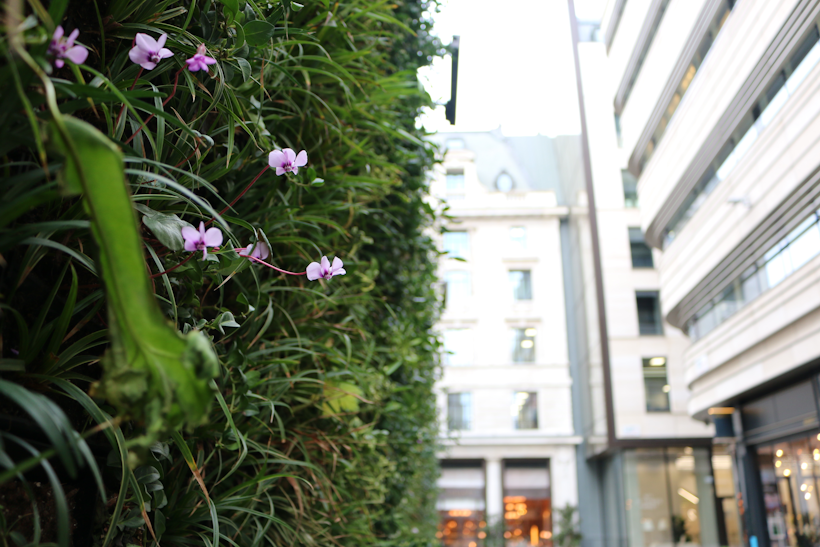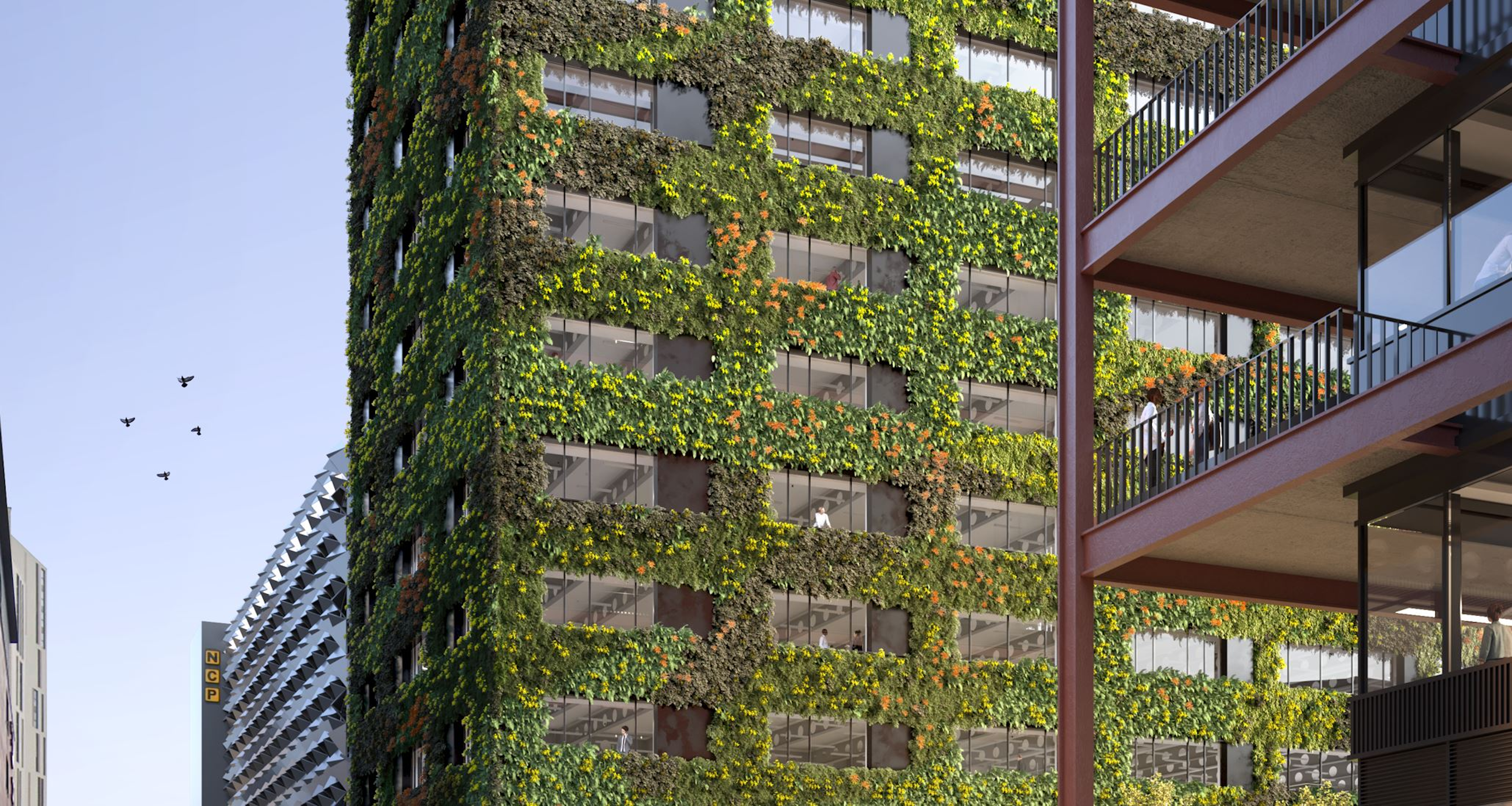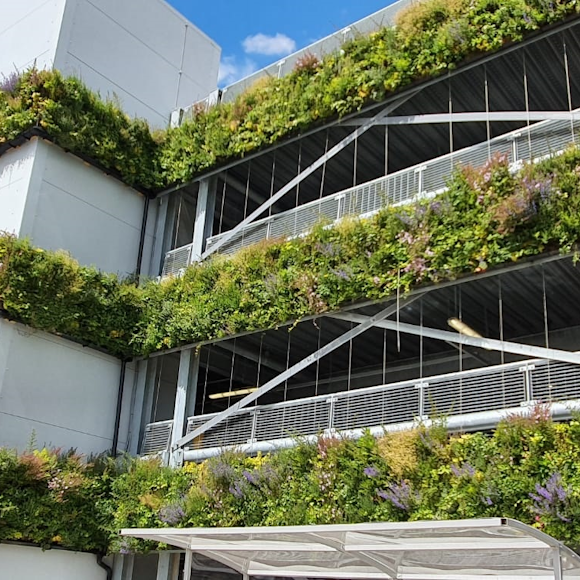Cities around the world are facing an alarming environmental threat known as the Urban Heat Island (UHI) effect, which has serious implications for the well-being of urban dwellers. The UHI effect refers to the phenomenon where urban areas experience higher temperatures compared to their surrounding rural regions. With climate change exacerbating the issue, it becomes crucial to explore innovative solutions for sustainable heat management.
The consequences of the UHI effect are far-reaching, with recent figures revealing a devastating toll on human lives. During heatwaves, the heat-related death toll among individuals aged 65 and over in England reached record levels, underscoring the urgency of addressing this environmental challenge.
One promising approach to combat the UHI effect and promote sustainable heat management is the implementation of Green Infrastructure. Green infrastructure encompasses various nature-based solutions integrated into urban settings, including living walls, green roofs, and urban forests. By harnessing the thermal properties of these elements, cities can mitigate the adverse effects of heat and create more resilient environments and communities.
In this blog, we will delve into the thermal properties of green infrastructure, with a specific focus on exploring how it can contribute to sustainable heat management. We will explore the benefits of green infrastructure in regulating temperature and enhancing energy efficiency, examine the findings from studies conducted on the subject, and highlight the role of environmental architecture in achieving sustainable heat management.
By understanding and harnessing the potential of green infrastructure, we can pave the way for cooler, more energy-efficient cities that prioritise the well-being of their inhabitants while reducing the impact on the environment.
What is the Urban Heat Island Effect?
The Urban Heat Island (UHI) effect refers to the phenomenon where urban areas experience higher temperatures compared to surrounding rural regions. Urbanisation and human activities contribute to this effect as cities absorb and retain heat due to their dense infrastructure and heat-generating activities. The UHI effect is most pronounced during hot summer days and can be exacerbated by heat waves.
As the climate changes, addressing the UHI effect becomes increasingly important. With rising global temperatures, the UHI effect is expected to worsen, posing significant challenges for urban dwellers. Recognising this, researchers, urban planners, and policymakers are exploring innovative strategies to mitigate the UHI effect and create more sustainable, liveable cities.

The Role of Green Infrastructure in Urban Heat Management
Green infrastructure plays a vital role in mitigating the Urban Heat Island (UHI) effect and promoting sustainable heat management in urban areas. By incorporating nature-based solutions into the built environment, cities can regulate temperatures, enhance energy efficiency, and create more liveable spaces. Let's explore the benefits of green infrastructure in urban heat management.
The Cooling Power of Plants
Green infrastructure, particularly living walls, plays a vital role in effective heat management within cities. These structures act as insulation, regulating building temperatures and creating more comfortable indoor environments. Additionally, they contribute significantly to reducing the Urban Heat Island (UHI) effect by lowering temperatures in and around buildings.
Studies have shown that densely planted green walls can save up to 59% of the energy required by buildings, demonstrating their significant energy efficiency benefits. Green walls have also been observed to decrease average daytime temperatures by 3.0°C, and when combined with green roofs, temperature reductions can reach 6.6°C. These reductions in temperature create more pleasant and energy-efficient indoor environments.
Furthermore, green infrastructure, including living walls, has a remarkable impact on mitigating the UHI effect. In hot and dry summers, exterior living walls can cool the temperature of the surrounding areas by up to 3 degrees. These structures act as insulation, helping to regulate the building's temperature, ensuring warmth in winter and coolness in summer. Notably, soil-based living walls on the exterior of buildings have been shown to decrease the temperature of the internal space by 16% in warm climates.
The benefits of green infrastructure extend beyond just regulating temperatures. Plants within these systems absorb approximately 50% of the sun's radiation resulting in a cooler, more pleasant, and safer climate within urban environments.
By countering the heat island effect and providing cooling benefits, green infrastructure contributes to creating more comfortable and sustainable urban environments, particularly during heat waves.
By leveraging the insulation and temperature-regulating properties of green walls, tenants can reduce energy costs for heating & cooling a building, and this reduction in consumption means less air pollution being produced at the power stations, reducing the Urban Heat Island effect.

Design a living wall with Viritopia and reap the benefits
Are you in the early stages of development? Are you looking to capitalise on environmental assets? Are you interested in learning more about living walls? Then look no further. Our team at Viritopia have you covered.
Using over 20 years of experience designing and maintaining green infrastructure, we form a detailed analysis of how a scheme is to meet regulations. We aid in a faster planning process and provide you with what’s needed to take your project to the next level.
Get in touch with our expert team today or learn more about our living wall consultancy right here.


